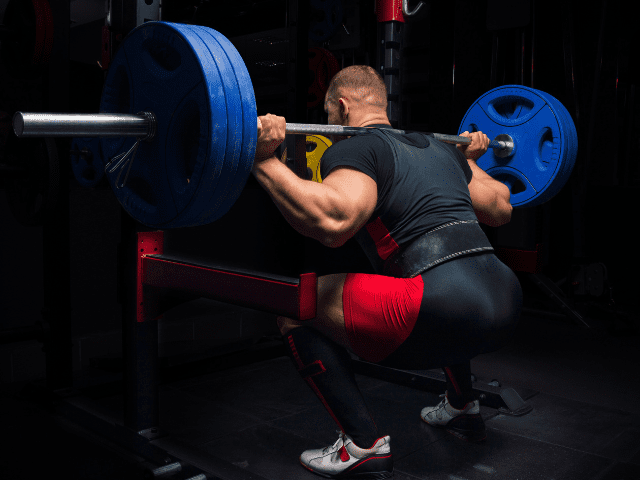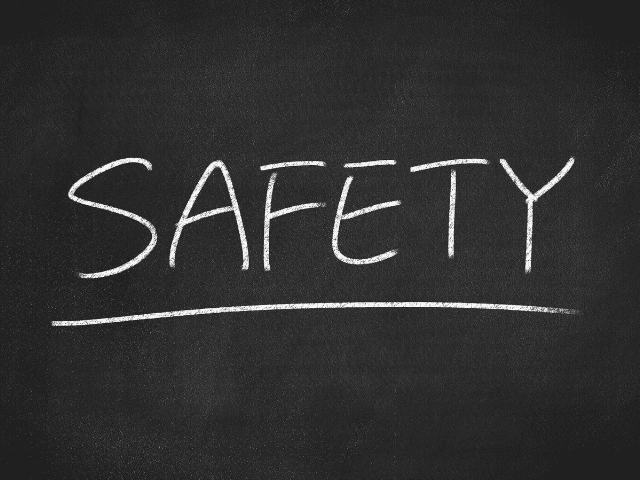One Rep Max vs Rep Max (Which Should You Be Doing?)
When it comes to testing strength, there seem to be two camps of Coaches.
There are those who believe in the one rep max, meaning you build up in weight until you have the maximal amount of weight you think you can lift one time. At that point, you either lift the weight or you don’t.
Then there are those who believe in doing rep maxes. This is where you perform 3, 5 or sometimes more reps of an exercise. Then you consult a chart that tells you what your 1-RM (one rep max) is depending upon the weight you used and how many reps you got.
In this article, I’m going to explain why I believe one of these methods is far superior to the other. So superior, in fact, that the other method should really never be used at all – ever.
Let’s start by comparing the glaringly obvious difference between the two.
1-RM vs Rep Max

Accuracy
I don’t think this is even up for debate. The true one rep max is the ultimate in accuracy. Put weight on the bar. Attempt to lift it. If you can, then that means you can lift it. If you can’t, it means you can’t. It’s hard to get more simple than that.
On the other hand, it sometimes takes a little math gymnastics when trying to translate your rep max to a ‘true max’.
Admittedly, when using lower reps like two or three, the equation to get your one rep max equivalent will tend to be pretty close. However, it’s accurate because you’ll need to use roughly 90%-95% of your 1 rep max for a 2 or 3 rep attempt. If you’re already going to be going this heavy, why not just go for a pure 1 rep max?
Furthermore, if you venture beyond 3 reps, then the accuracy of a rep max goes right down the tubes.
I remember in high school when we figured out that 225 x 10 would give us a “300-pound max”. A few of us were able to do exactly that and then even got a t-shirt for being in the “300-pound bench club”. The truth is, 300 pounds would have crushed every single one of us.
Not only does this lack of accuracy affect max day, it has the potential to affect your entire next training cycle. If you use maxes for your training cycles, having maxes that are inflated could end up with athletes lifting weights that they cannot handle when the next training cycle begins.
Bottom line, if you want your results to be as accurate as possible, go with a one rep max.
Safety

I’ve had coaches explain to me that even if it’s not as accurate as a true one rep max, they use rep maxes because it’s safer.
But… is it?
I understand the thought behind a rep max being safer. By using a sub-maximal load, the chances of the lifter getting buried by the weight are less. That may be true, at least for the first rep. But, it’s just as easy to get pinned on rep 2, 3 or 8 when doing a rep max as well.
The other thought is simply that using a lighter weight is safer than using a heavier weight.
Let’s hash out both scenarios – a one-rep max and a multi-rep max – and examine them in turns of safety.
I’ll use back squat as an example.
(In both of these scenarios it is assumed that a proper warmup and weight progression up to the max attempt has already been performed)
One Rep Max
The one rep max attempt gets loaded onto the bar. Safety bars or straps are set on the rack at an appropriate level. The lifter gets focused, un-racks the weight and steps back into position.
Spotters are set up on each side of the bar with another spotter (preferably a Coach) is behind the lifter. The lifter squats down and drives up.
At this point, one of three things happens. Ideally, the lifter stands up with the bar, racks the weight and now gets to celebrate their new max with their teammates.
The second scenario is the lifter begins to get stuck and the spotters step in to help to make sure the weight gets back to the rack safely. Finally, the lifter could choose to ‘dump’ the weight and allow it to crash safely into the safety bars.
In all three of these scenarios, the lifter is fresh, focused, fully braced and giving 100% maximal effort. Spotters are at the ready knowing that the lifter is only attempting this one single rep. And, if all else fails, the safety bars are there to catch a failed rep.
Rep Max
Now let’s discuss what a rep max, at least in my experience, tends to look like.
The lifter (or coach) picks out a weight that they are going to attempt for three to five reps. They set up for the weight, along with their spotters, in the same manner as the one rep max attempt.
They squat down and drive up. One. Squat down again and drive up. Slower this time, but a solid rep. Two. Down again, legs are trembling, form breaks down a bit through the torso, but the lifter stands tall. Three.
The weight room erupts – ONE MORE!!! ONE MORE!!! ONE MORE!!!
This is where the theory of a rep max being safer gets lost in actual practice.
You have a lifter that is now fatigued, breathing heavy, legs shaking. But, a room full of cheering teammates can be enough adrenaline (and peer pressure) to grind out that one more rep.
But, at this point form is out the door and the lifter is now much more likely to become injured with another attempted rep.
Now, I’m sure there are coaches that use a rep max that are saying, ‘I would never let my athletes go past the point of an extra rep being unsafe.’
If you do use a rep max then I hope that’s true, but it’s not what I have witnessed over my career. It’s easy to get lost in the moment and the line of what is safe to try an additional rep can get blurred.
Olympic Lifts

I’ve been using the example of a squat max because squat and bench are the two of the exercises most commonly tested in a weight room. The other one is generally some type of a clean, most often a Power Clean.
I always thought it was obvious that Olympic lifts should be one rep maxes. Until I saw clean rep maxes done and I’ve now seen it done multiple times throughout my career.
Olympic lifts should never be rep maxed, period. Form and technique can get sloppy really fast when trying to do maximum reps and Olympic lifts are way too dangerous to be doing in a fatigued state with bad form.
Not Maxing At All
Do you have to choose one or the other? What if you don’t want to max?
I don’t think there is anything wrong with not having ‘max out’ days in the weight room.
I would always have days where I would take my athletes up to 97% or 100% for a single. Then, they could have the option of hitting a bonus rep or two based on how they felt. New maxes would get hit left and right, but it was never any pressure to put on weight that they didn’t feel like they could handle that day.
Some of this is going to depend on the head coach you are working with if you are working in a team setting. You need to have a conversation with your head coach from the start about what their expectations are regarding any testing numbers or results that they want to see. Explain to your coach your own testing philosophies and then work to find common ground.
Final Thoughts
When it comes to testing athletes in the weight room, I feel strongly that a 1 Rep Max is the best way to go for both accuracy and safety.
Teach your athletes proper form, including how to properly brace, control the eccentric portion of a rep and how to bail out of a lift if necessary.
Also, educate your athletes on how to be good spotters. Finally, there should be clear (standardized) communication between lifters and spotters on when and if the lifter needs help.
Do all of these things and you should be able to safely 1 Rep Max your athletes (if you choose to max them at all).

